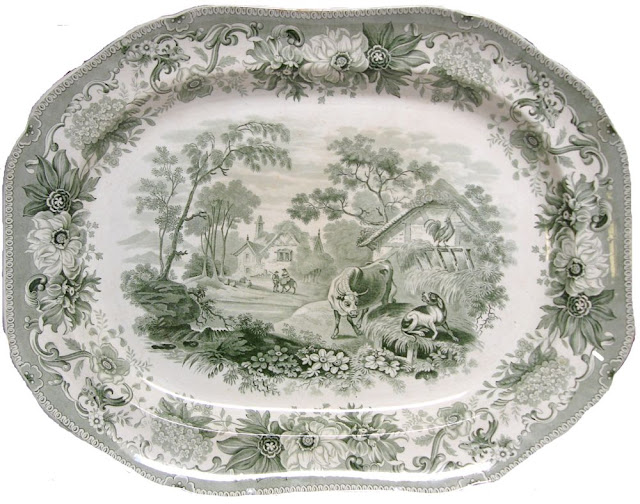---------oOo---------
Aesop and the Fables:
Aesop's Fables, or the Aesopica, is a collection of fables credited to Aesop, a slave and storyteller believed to have lived in ancient Greece between 620 and 564 BCE. Of diverse origins, the stories associated with his name have descended to modern times through a number of sources and continue to be reinterpreted in different verbal registers and in popular as well as artistic media. The fables originally belonged to the oral tradition and were not collected for some three centuries after Aesop's death. By that time a variety of other stories, jokes and proverbs were being ascribed to him.
---------oOo---------
Fable:
One day, in a stable on a farm, a dog lay asleep in a manger that was filled with hay. The dog was awakened by the cattle, which came into the stable tired and hungry from working all day in the field.
However the dog would not let them get near the manger, because he wanted it all for himself. Indeed, he snarled and bared his teeth at them: it was as if the manger were filled with the best of meat and bones, which he wished to keep all for himself. In actual fact, of course, the manger contained only hay (and the dog himself).
The cattle looked at the dog with undisguised contempt.
‘How selfish he is!’ said one of the cows. ‘He cannot eat the hay himself, but he will not let us eat it – even though we are so hungry for it!’
At this point, the farmer came into the stable and saw how the dog was acting. He grabbed a stick and drove the dog out of the stable, hitting him for his selfish behaviour towards the cows.
Moral:
Do not grudge others what you cannot enjoy yourself.
Comments:
- The story and metaphor of The Dog in the Manger derives from an old Greek fable which has been transmitted in several different versions. Interpreted variously over the centuries, the metaphor is now used to speak of one who spitefully prevents others from having something for which one has no use.
- Although the story was ascribed to Aesop's Fables in the 15th century, there is no ancient source that does so.
- From this fable and its moral comes the common expression ‘dog in a manger’ to refer to someone who has no need of (or ability to use) a possession that would be useful or valuable to others, but who prevents others from having it.
- The popularity of the ‘dog in the manger’ story appears to have had more to do with the spread of Christianity than the popularity of Aesop’s work.
- A version of the fable was alluded to in Saying 102 of the apocryphal Gospel of Thomas. This example involves oxen rather than a horse: "Jesus said, 'Woe to the Pharisees, for they are like a dog sleeping in the manger of oxen, for neither does he eat nor does he let the oxen eat'."
- See also Mathew 23.13:
"Woe to you, teachers of the law and Pharisees, you hypocrites! You shut the kingdom of heaven in men's faces; you do not enter yourselves, nor will you let others enter."
Gallery:
C 1831 platter featuring the Dog in the Manger
Child’s ABC plate
Child’s ABC plate
Walter Hunt (1861–1941), "Dog in the Manger" c 1885
Based on the Aesop’s fable, William Jennings Bryan is the dog that keeps horses from the “White House Oats,” even though he himself will not eat the grain. The cartoon manifests the common feeling that the twice-defeated Democratic presidential nominee of 1896 and 1900 was obstructing his party from unifying around another candidate. Bryan upstaged the 1904 nominee by announcing his own populist agenda, which many interpreted as the beginning of his campaign for the presidential nomination in 1908 (which he ultimately received).








No comments:
Post a Comment
Note: Only a member of this blog may post a comment.